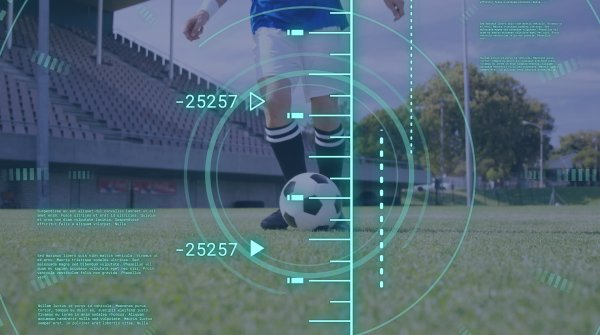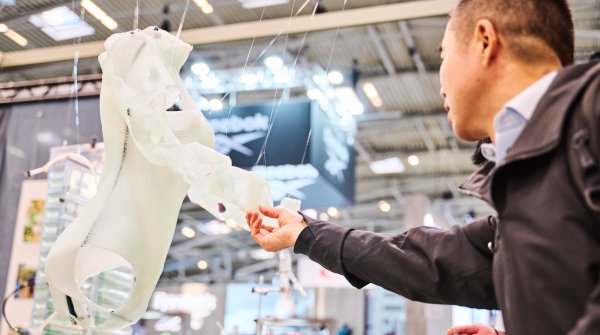Identifying what the next step will be, sharing best practices, building strong partnerships and protecting critical information will become critical to survival for some brands. From design to production, marketing to logistics and distribution channels, smart technologies will radically transform businesses in the medium term.
"58% of global executives agree that their teams have improved in both efficiency and decision quality since implementing AI solutions." - MIT SLOAN Management Review, based on global industry survey
From content generation, image recognition, design recommendations, modeling and simulation, product performance measurement (LCA and traceability) to user experience analytics, AI tools are available across the value chain. How can they help solve industry challenges?
All insights at a glance
General artificial intelligence and virtual reality
AI as a designer
Collabs of the future with AI
AI in product development
AI in pricing and for a better user experience
Is AI ready yet?
The limits of AI
According to Open AI, "Artificial intelligence (AI) refers to the field of computer science that aims to create machines capable of performing tasks that normally require human intelligence. It is based on algorithms and mathematical models that allow machines to analyze data, recognize patterns, and adapt to new situations. AGI (Artificial General Intelligence), on the other hand, aims to develop a versatile, adaptable intelligence that can excel in a wide range of domains. It is capable of learning new skills, adapting to unfamiliar situations, and solving complex problems in a manner similar to a human."
"General artificial intelligence is still an evolving field. There is no AI system yet that can fully replicate the general intelligence and autonomy of humans." - Open AI to ChatGPT
In a nutshell, artificial intelligence attempts to mimic certain human cognitive abilities so that machines can perform tasks smartly. Virtual reality (VR) is defined by AI as: "A technology that creates an immersive and interactive computer simulation in which the user can immerse and interact with an imaginary or augmented environment." Most often, a special headset or visualization device is used to provide users* with a multisensory experience. The goal of virtual reality is to give users experiences that appear real but are actually computer-generated. While AI artificially replicates decision-making processes, VR stimulates one or more senses to enhance a perception, process, access, or practice of a sport. Some cities that emphasize outdoor sports activities have already embraced this technology. For example, the town of Sallanches in the French Alps is using virtual reality for its promotional campaigns for outdoor activities (paragliding, via corda and water sports) - a way for people who don't have access to this landscape to immerse themselves in it. And all without CO2 impact.
"AI could increase the economic output of the fashion and luxury industry by $150 billion to $275 billion over the next three to five years." - McKinsey Report 2023 "Generative AI unlocking the future of fashion"
AI tools can now already automatically generate visual content such as images, graphics or 3D models with some specifications. Especially in product design, the technology has already established itself. Innovative designers are already using digital and 2D or 3D drawing for computer-aided design (CAD), of which Adobe™ remains the global market leader.
Some AI tools use recommendation algorithms to suggest design elements or visually appealing combinations based on personal preferences or other criteria. For example, the Dall E™ and Ca.la™ design systems can do this. Dall E™, like ChatGPT, was developed by OpenAI and is AI-based. Ca.la™ is the first mobile application for the fashion industry that enables companies of all sizes to collaborate remotely with their global suppliers. The tool is designed as a scalable platform that enables automation and optimization of the production chain. It is also possible to exchange information with colleagues via the app. With Dall E™, fashion designers can enter detailed text descriptions of the product, and the tool generates matching realistic and diverse images.
This allows them to try out different design ideas, approach concepts and visualize their creations before they are even physically realized. With Dall E™, teams can use the generated images as a basis for further product development. This can help explore new ideas while collecting data to serve as proof of concept. A new world opens up for designers, product managers and developers!
AI can also think up collaborations based on keywords and brand names that don't actually exist. This is how unexpected ideas emerge. Str4ngeThing, one of the hottest Instagram accounts for AI art and design, has made a name for itself with its concept "The Birth of Venus." The artist uses AI-based generative imagery and design tools to create conceptual works that combine eras, brands and styles, such as a Nike™-inspired women's tracksuit with an architectural cape that has a strong nod to the Renaissance.
"Using artificial intelligence as a powerful tool for pushing the boundaries of fashion design and technology, artificial intelligence is being utilized to create cutting-edge concept art that showcases its remarkable capabilities. Through my work, I aim to redefine the fashion landscape through AI-generated artistry and inspire." - Str4ngeThing
A few months ago, a fictional collaboration between Ikea™ and Patagonia™ generated attention on social media. It was created using Midjourney™ and brought together the DNA of both brands. The result was camping gear and outdoor furniture, for example, a camping seat, lamps and a backpack. And is it so inconceivable that one day the two brands will actually work together to design a collection of eco-friendly outdoor accessories and furniture?
AI can also be used in design concepts and model building. With the help of AI, virtual simulations are created to evaluate them. This allows designers to try out different options, predict outcomes and optimize their creations before they go into production. And model makers can test different materials, volumes, transparency levels and colors. Some 3D design programs that use AI simulate the postures people use in sports, allowing designers to focus directly on key and critical areas of the product. The Schoeffel™ brand, for example, uses 4D AI tools to map bodies, which facilitates the design of certain products such as technical ski or bike underwear.
With the American tech giant's launch of the Apple™ Vision Pro goggle on the horizon, some outdoor brands are going a step further and positioning themselves in the tech innovation market as well. The first augmented reality ski goggle has been launched by Sirius™. The product provides information that supports and guides skiing in different weather conditions, speeds, altitudes or elevation changes. The Athos Era™ brand, meanwhile, is paving the way for a custom 3D-printed climbing shoe based on foot scans.
Generative Pricing and Dynamic Pricing are approaches to pricing based on the use of AI. The aim is to optimize prices. To do this, generative models are used to analyze a variety of influencing factorsk (country, time, channel, etc.) and find the most effective pricing strategy for them.
Some brands, including Telfar™, use them similarly to auctions to raise or lower the price depending on popularity and sales. In the case of Telfar, this is referred to as "gaming taxification," as the final price is set when the counterpart is sold. This allows the brand to make a preliminary estimate and set the best price - as is the case with hotel booking sites. AI tools can also analyze usage data and user behavior to identify patterns and trends. This information helps designers understand how to improve the user experience and make data-driven decisions.
AI tools also offer exciting opportunities for experts in design, sourcing and marketing. By helping to improve the quality of their designs and strategic decisions, these areas will also benefit from data management and risk prediction in the future.
When used wisely and under the right conditions, AI is a transformer trained on massive amounts of data. However, there are still many gray areas. Can we build ethical and moral rules into the tools? How well prepared are they? What is the level of reliability? Can it take into account cultural and temporal frameworks? What is even "aesthetic" or "beautiful" for an AI?
"In our traceability tool, AI serves business intelligence. We propose to optimize user engagement in the traceability process. Data pre-filling makes the platform easier to use, especially for suppliers." – Laura Bréband, co-founder of Trace for good
As with the myth of green growth, and to avoid a certain tech-solutionism, one must be aware of the limits and possible drifts or rebound effects of a system.
Depending on the use case, country and legislation, AI and VR solutions are encouraged or inhibited. Not all brands are ready for such changes yet and are adapting their value chain and sales methods. For some products and brands, getting there is particularly complex. The first step is often traceability 3.0 and a modern e-commerce solution. Artificial intelligence, already very present, will be fully integrated in the near future. But in which ethical framework and under which legislation has yet to be determined. One thing is certain: data is on the rise and you should be prepared for it.
 SportsTechUnlocking the Future of Sports with AI
SportsTechUnlocking the Future of Sports with AI
- ISPO awards
- Mountain sports
- Bike
- Design
- Retail
- Fitness
- Health
- ISPO Job Market
- ISPO Munich
- ISPO Shanghai
- Running
- Brands
- Sustainability
- Olympia
- OutDoor
- Promotion
- Sports Business
- ISPO Textrends
- Triathlon
- Water sports
- Winter sports
- eSports
- SportsTech
- OutDoor by ISPO
- Heroes
- Transformation
- Sport Fashion
- Urban Culture
- Challenges of a CEO
- Trade fairs
- Sports
- Find the Balance
- Product reviews
- Newsletter Exclusive Area
- Magazine





